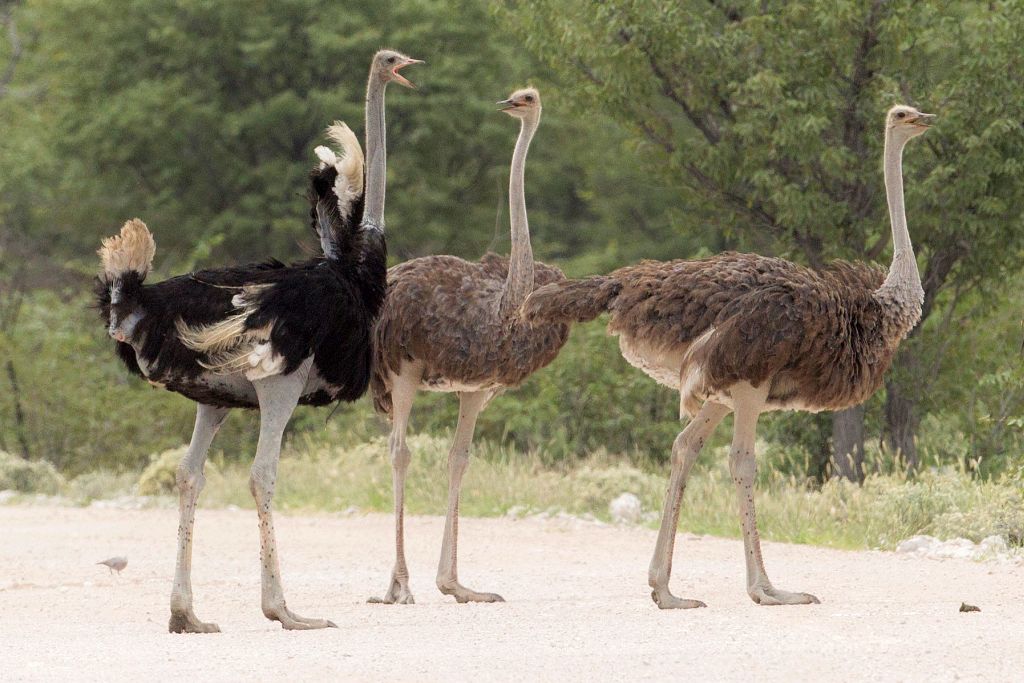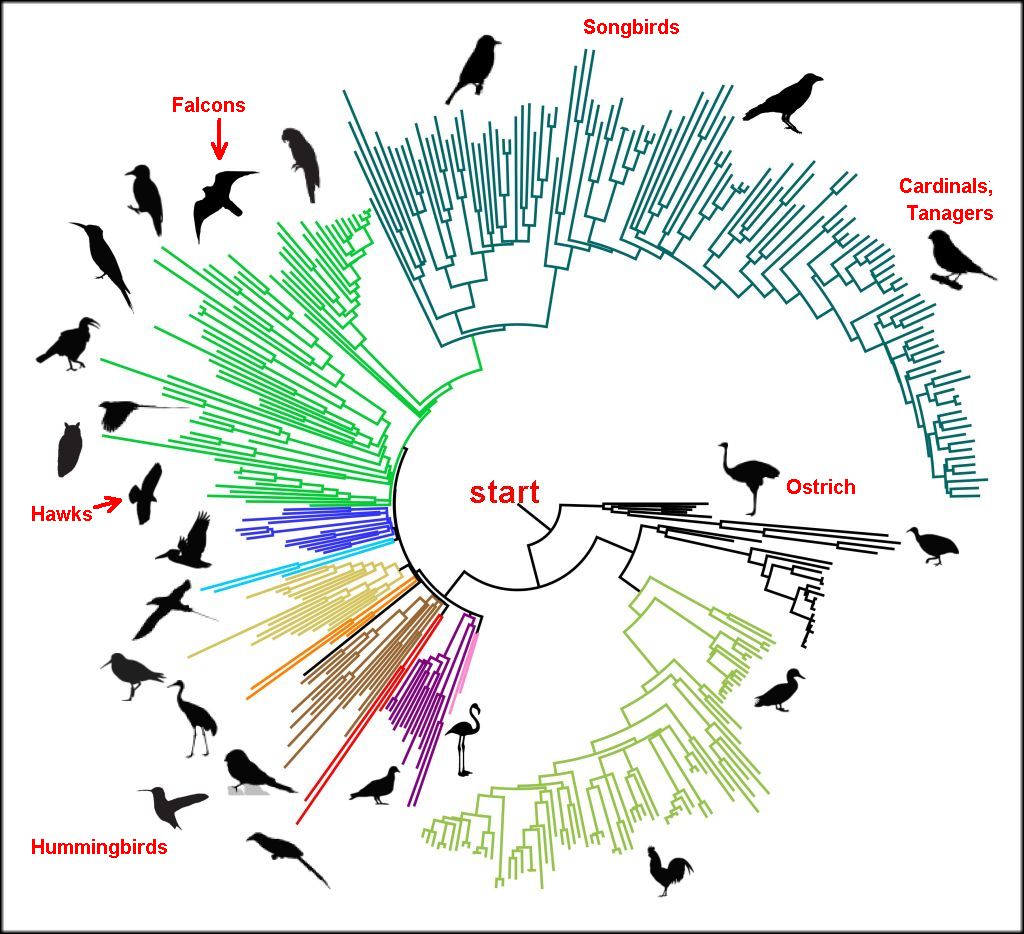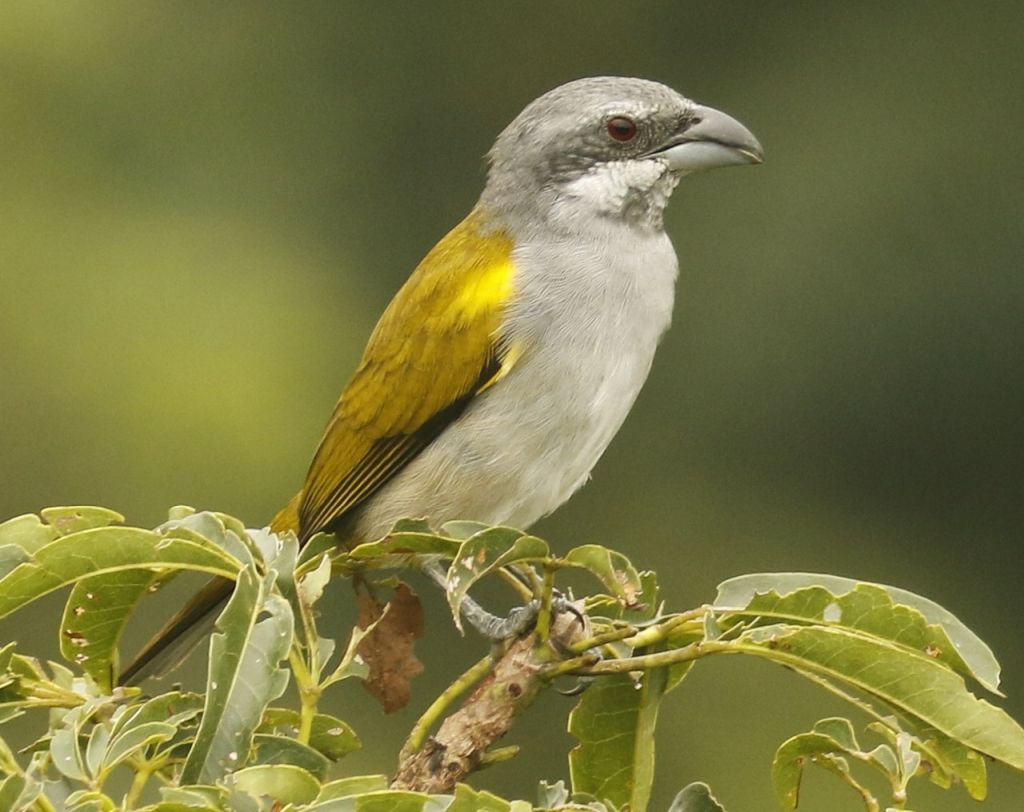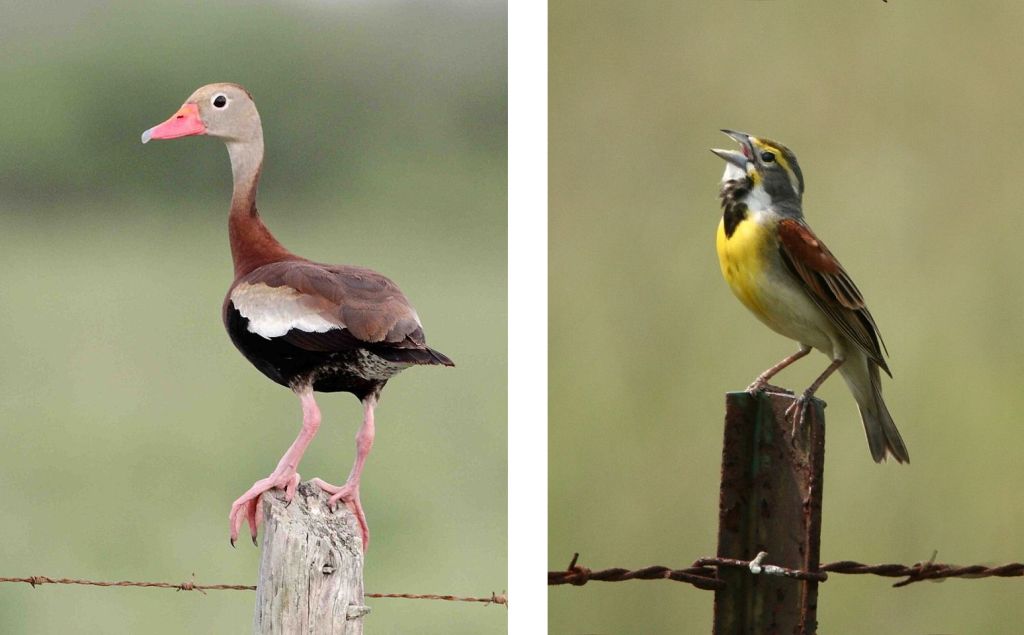
19 February 2020
Which bird is closest to the dinosaurs? Which one is the newest species? The answer has changed in the last 30 years.
The taxonomic order of birds used to be rather stable. North American field guides, listed in evolutionary order from oldest to newest, had loons at the beginning and sparrows at the end. Then in 1991 everything changed.
Scientists began using DNA sequencing to see who’s related to whom. They learned that ducks and geese are older than loons, loons are related to penguins, falcons are related to parrots (not hawks), and grosbeaks are newer than sparrows.
The phylogenomic supertree below, current to July 2019, shows the new relationships in a clockwise spiral from the center. The first bird, closest to the dinosaurs, is the common ostrich (Struthio camelus), photo at top.

The last and newest bird is the yellow-shouldered grosbeak (Parkerthraustes humeralis(*)), native to western Amazonia in South America.

As of February 2020 there are 10,928 species on the worldwide taxonomic checklist of birds. Regional checklists show a subset of birds, limited by geographical or political boundaries, so the first and last birds vary by checklist:
- The AOU checklist for North and Middle America has 2,154 species from highland tinamou to streaked saltator. First and last are both from Central America.
- The ABA checklist for the U.S and Canada including Hawaii has 1,116 species from black-bellied whistling duck to Morelet’s seedeater.
- Pennsylvania‘s checklist has 429 species from black-bellied whistling duck to dickcissel, shown below.

Additional DNA sequencing will change the lists over and over again.
I wonder who will be first and last in 2050.
(photos from Wikimedia Commons, phylogenomic supertree from MDPI; click on the captions to see the originals)
p.s. (*) DNA sequencing gave the yellow-shouldered grosbeak a new genus — Parkerthraustis — named for the late Theodore A. “Ted” Parker III, a superb field ornithologist who died in a plane crash in Ecuador in 1993, age 40.
p.s.2. Click here to see a more detailed phylogenetic tree (in 2012 by University of New South Wales).
p.s.3. Click here to see the phylogenetic list.
This is unrelated to this topic, but I wasn’t sure where else to reach out. I just read that very extensive work will be beginning on the I-79 bridge crossing the Ohio River at Glenfield/Neville Island/Robinson Twp. The date published to begin is March 26. Is there still a peregrine falcon best on that bridge? How would this affect that nest?
Amy Miller, thanks for your question. I’m looking into it.
Awesome! Only… uh, 10,500 or so to go for me! 🙂